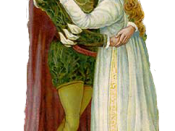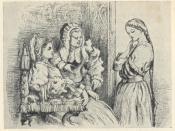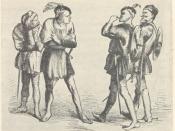Act II, scene ii of Romeo and Juliet is commonly known as the "balcony scene," and although this designation may be inaccurate (Shakespeare's stage directions call for Juliet to appear at a "window," not on a balcony), this scene has been quoted from, played, and misplayed more than any other in all of the Bard's works. It is proceeded by some astoundingly beautiful verse in Mercutio's "Queen Mab" speech of Act I, scene iv., and by the individual and joint speeches of Romeo and Juliet at the banquet which concludes the first act and includes a wonderful exchange in which the lovers author a sonnet together. But the balcony scene rises even above these brilliant flashes and is indelibly etched in our memories. Here Shakespeare's genius is evident even at a relatively early stage in his career, and while the characters of Romeo and Juliet predominate, the playwright employs certain key dramatic devices and stage techniques that amplify the scene's impression.
There is, to begin, a deliberate heightening of dramatic suspense immediately before Romeo enters into Juliet's orchard. Before the beginning of Act II proper, Shakespeare inserts a second appearance by the Chorus (II, chorus 2, ll.1-14). Taking the same sonnet form as the play's Prologue, this speech is meant to heighten the narrative tension, suggesting, that Romeo, "being held a foe," may not have access to his Juliet. The dissonance is intensified still further when a lone Romeo asks aloud "Can I go forward when my heart is here?" (II, I, l.1). When Mercutio and Benvolio enter just as Romeo withdraws, there is a mild sense of pursuit that lends even greater urgency to the moment. But the search for Romeo is broken off, with Romeo then emerging in Act II, scene ii to mark a line...


